08/09/22 - 29/10/22
Andrea Büttner
Part 2: Painted Ceiling and Floor
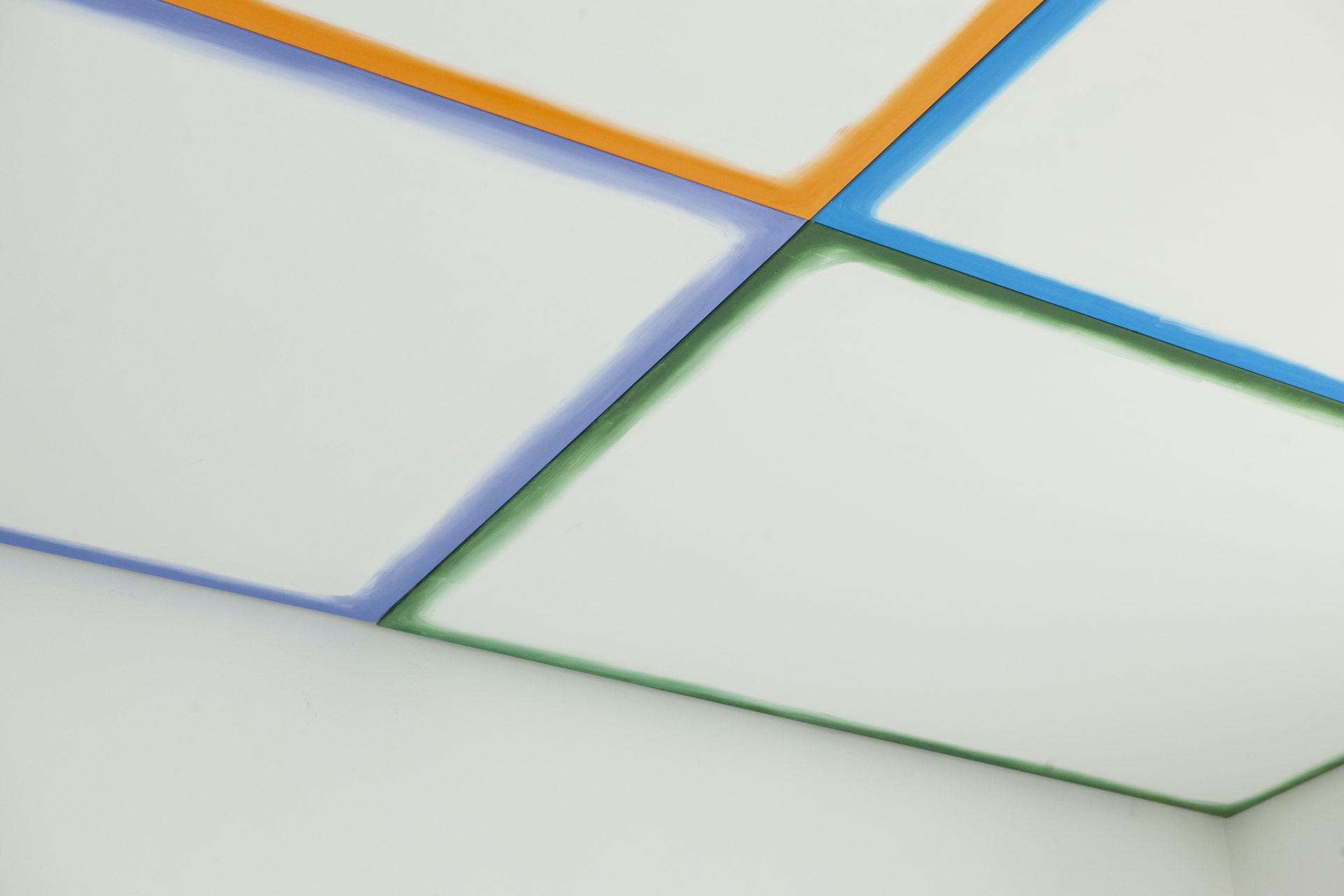
Andrea Büttner, Painted Ceiling and Floor, installation view at Jan Mot (detail), 2022
For her solo exhibition, Painted Ceiling and Floor at Jan Mot from September 8 to October 29, Andrea Büttner presents two site-specific works. A ceiling installation composed of nine oil paintings on canvas is combined with a floor painted in yellow. This new presentation is part of Büttner’s ongoing interest in ceiling paintings and in the modification of the exhibition space through the introduction of colour and pattern.
“These painted ceiling works speak to the threshold of painting and architecture, the bodily experience of looking at frescos in Romanesque chapels and the importance of the ceiling for this experience.”(1) The reference to Christian theology and philosophy can also be seen through a binary tension that this new presentation is infused with: the contrast between high and low.
Büttner has previously presented several variations of ceiling works. One such work is Painted Ceiling (potatoes), presented in 2019 at Hollybush Gardens in London. Referencing Giotto’s star-filled blue fresco adorning the vault of the Scrovegni Chapel in Padua, Büttner
transformed the arched ceiling of the London gallery space into a painted sky mural, populated by life-size potatoes. She transferred the earthly and earthy to an elevated position recalling celestial religious frescoes.(2) The same year, she presented a ceiling painting at the London project room FRIENDS run by the artist David Raymond Conroy. In terms of colour and composition, this latest monumental work shown at Jan Mot is closest to the painting she included in her 2021 exhibition at David Kordansky Gallery in Los Angeles entitled Grids, Vases, and Plant Beds. Here, each of the nine canvases are outlined in a single colour and embrace the shape of the gallery ceiling, composing a grid.
For Büttner, this site-based installation is connected to Rosalind Krauss’s 1979 essay ‘Grids’ in which Krauss examines the prevalence of the grid in modernist art. Krauss observed that “by now we find it indescribably embarrassing to mention art and spirit in the same sentence. The peculiar power of the grid... arises from its power to preside over this shame: to mask and to reveal it at the same time.”(3) This thinking on the success of the modernist grid echoes Büttner’s research, presented in her book of writings, Shame, published in 2020. In an online interview, Büttner mentions Krauss and elaborates on her interpretation of the grid: “the grid covers up something which has come to be considered shameful, which is narrative. From my perspective, this narrative is the narrative of religion, and of history too, I think.”
In Painted Ceiling and Floor, Büttner stages works that portray a desire to elevate. Enacted through bodily experience, the action of looking up envelopes the viewer in a spatial tension between body, ground and ceiling. The canvases catch daylight to reveal the brush strokes of the artist’s hand, a subtle hint of tactile possibility. The foggy erasure of colours seems to tentatively enter each canvas, rounding in the corners as if they were radiating from the centre. A composition of ephemeral, misty, imperfect yet vibrant and tangible apparitions. Painted Ceiling and Floor — Büttner’s whole gallery gesture — reminds us of the uplifting ability in which “artworks preside over the feeling of shame and produce a pleasure.”
(1) Andrea Büttner, email correspondence with Jan Mot for exhibition Painted Ceiling and Floor, 23 June 2022.
(2) Press release for The Heart of Relations, Hollybush Gardens, London, 25 September – 14 December 2019.
(3) Rosalind E. Krauss, ‘Grids’, in: The Originality of the Avant-Garde and Other Modernist Myths, The MIT Press Cambridge, Massachusetts, London, 1979.
Text by Daphné Charitos and Filip Jakab
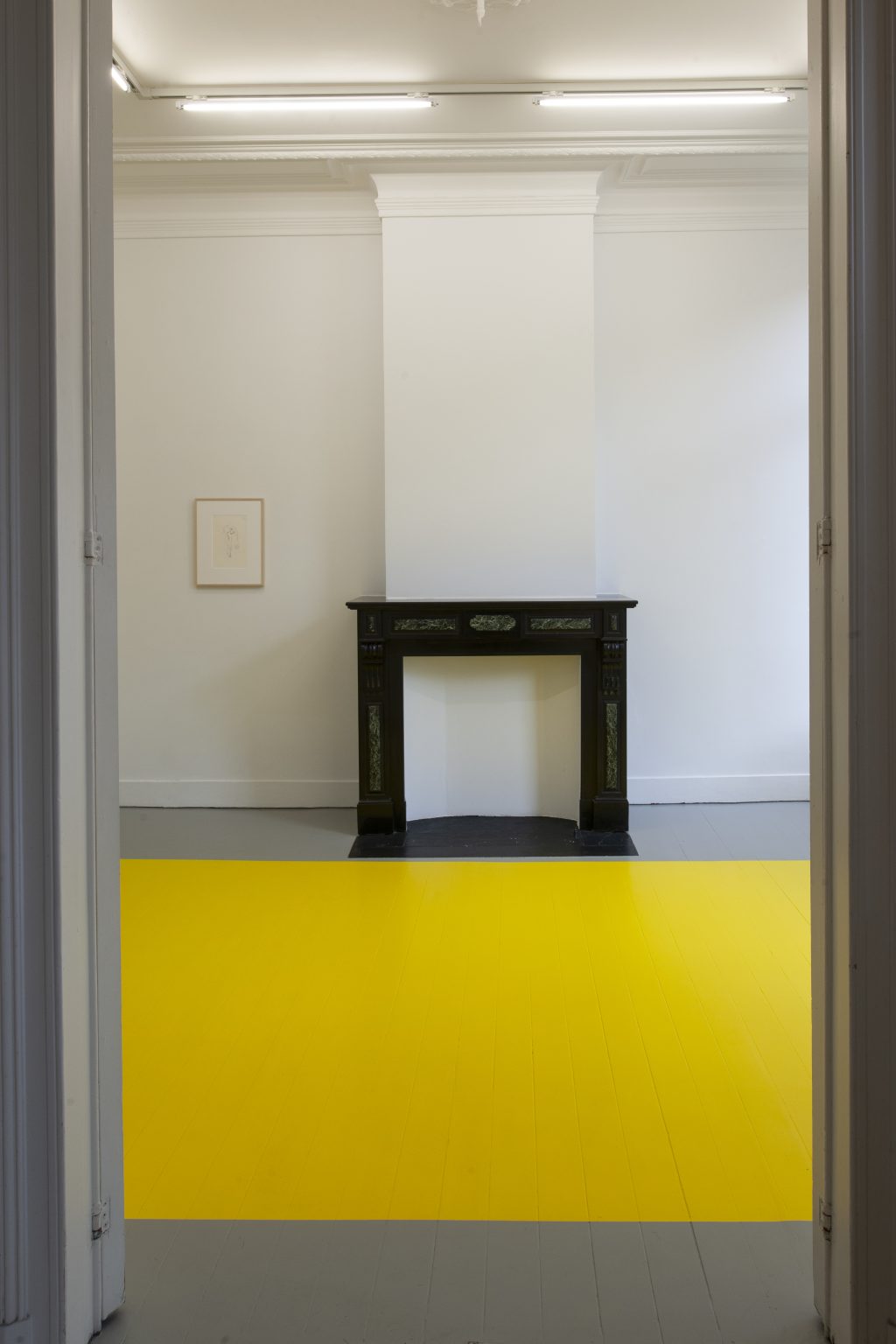


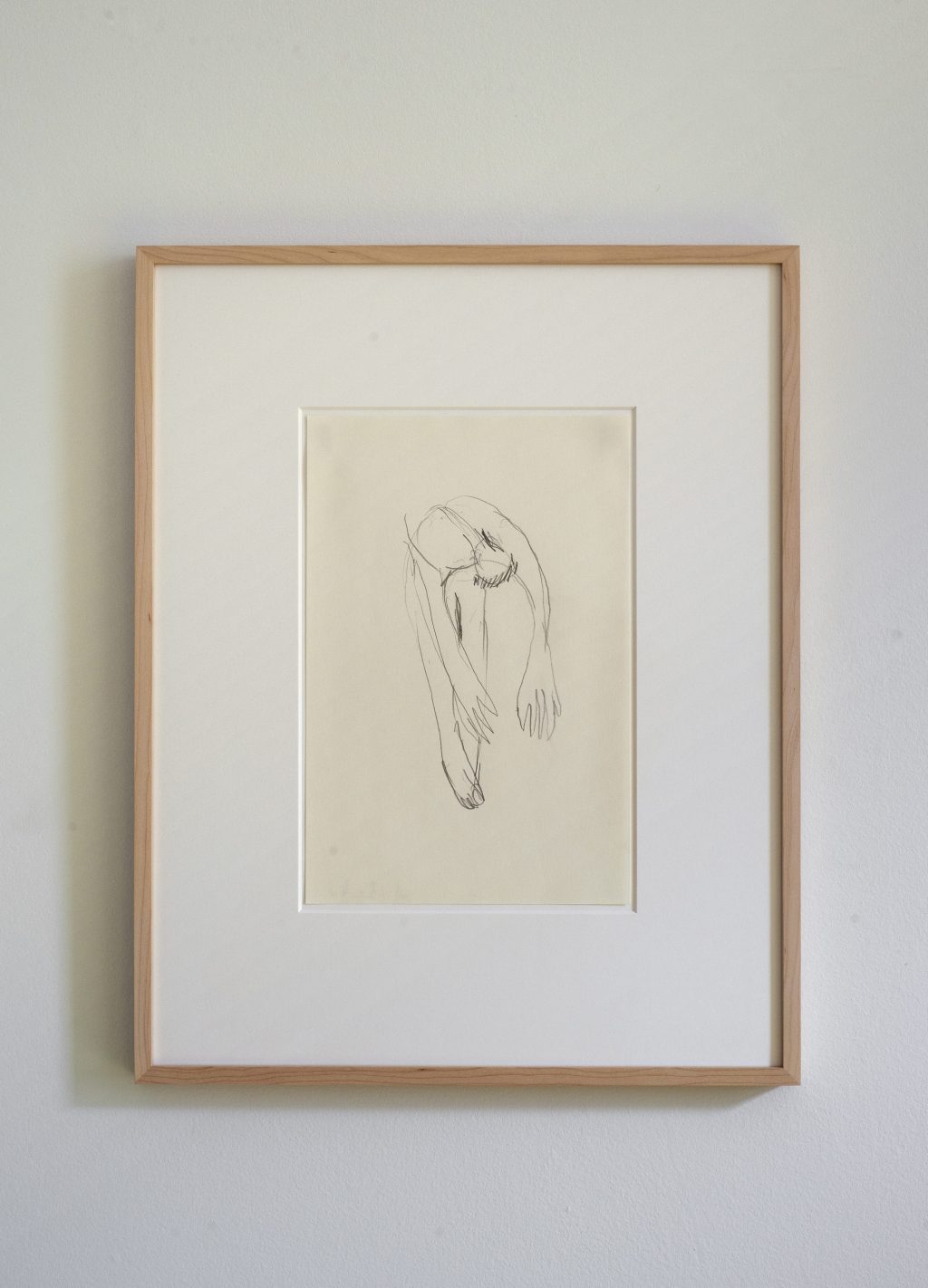
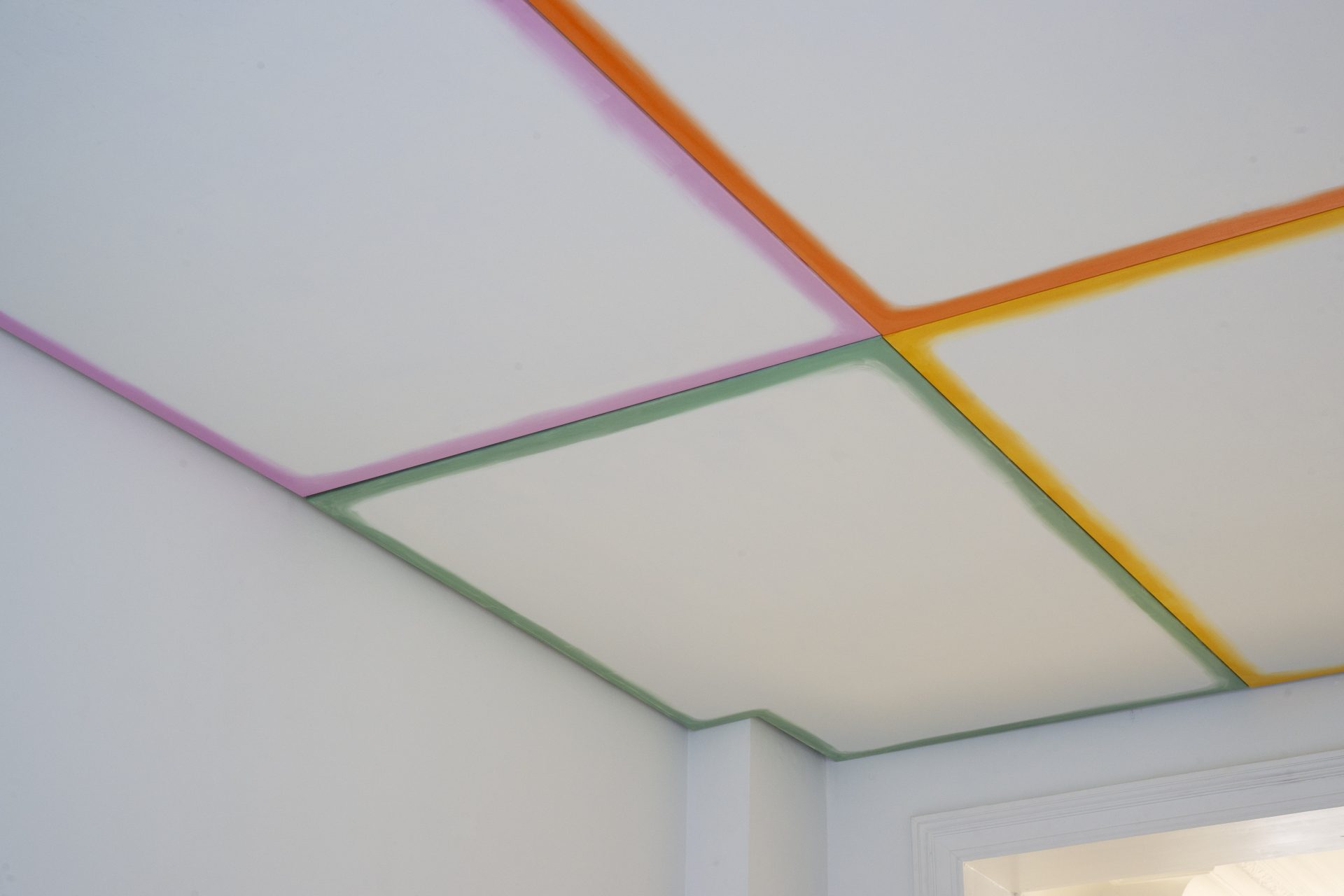
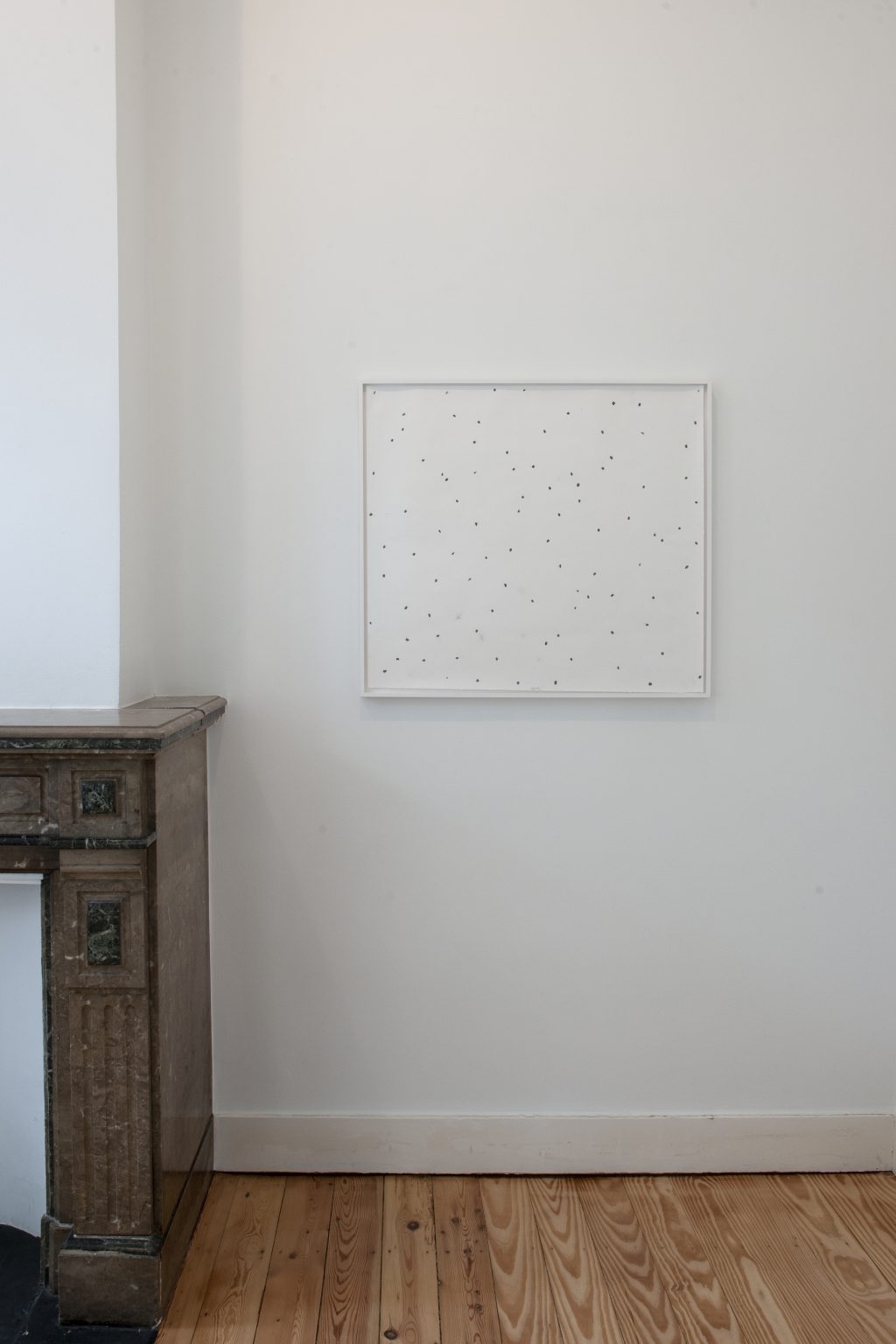
Andrea Büttner, Untitled, 2019, pencil on paper, framed, 71 x 79,5 cm (image), 74,5 x 82,8 cm (frame), unique